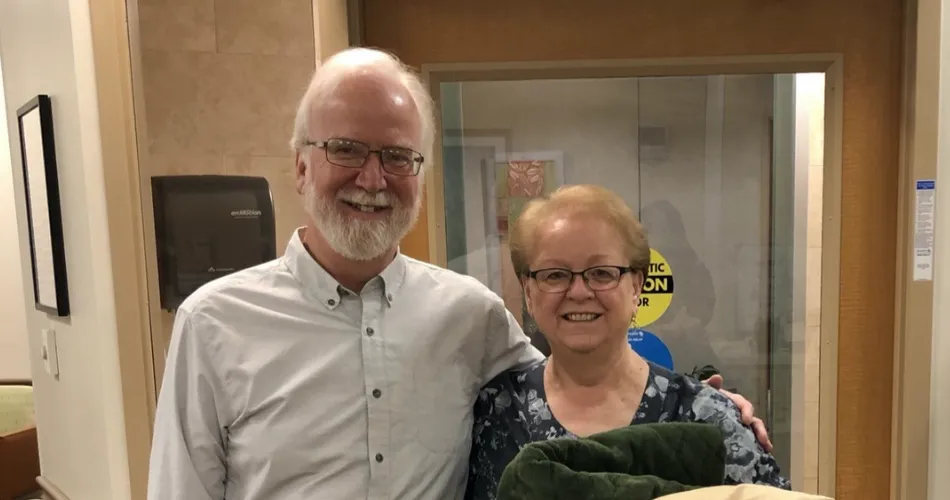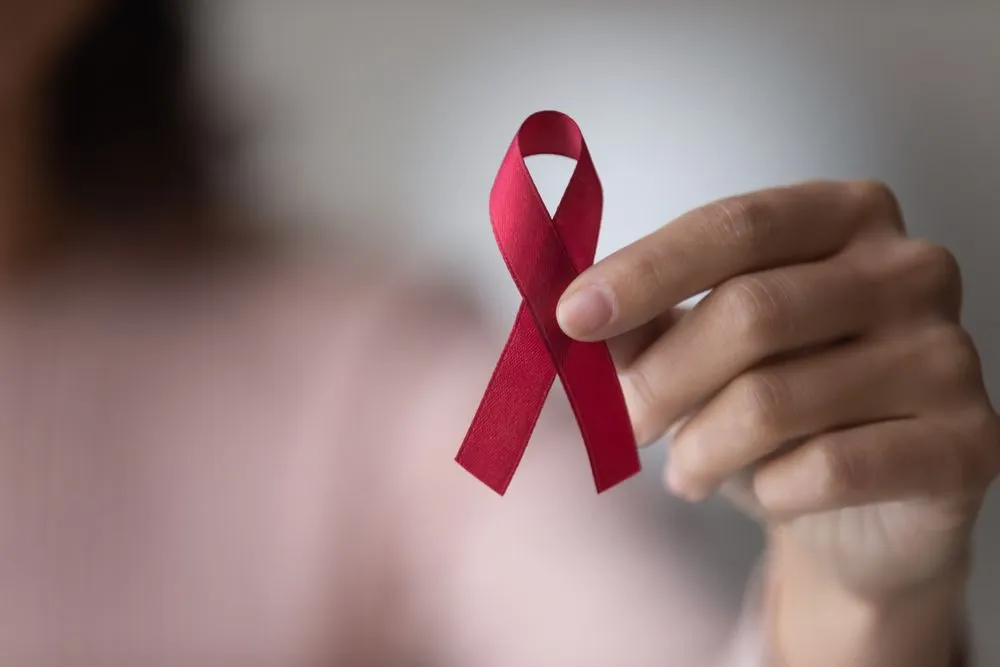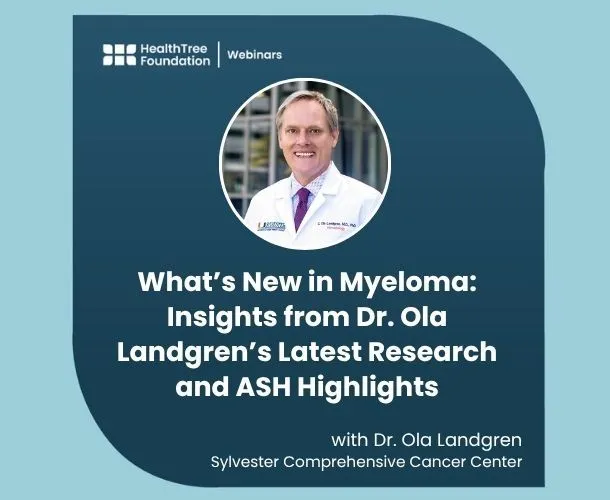Six Steps for Newly Diagnosed Multiple Myeloma Patients
If you've recently been diagnosed with multiple myeloma, we're sorry that you're in a club that none of us wanted to join. The good news is that you will meet the kindest people in the myeloma community and the HealthTree Foundation is here for you!
First, click the button below to download and print our checklist of what to ask your doctor at your first appointment.
Here are six steps to reduce your anxiety and take meaningful action:
1. Find a Myeloma Specialist
If you do only one thing for your care, it will be to find and consult with a myeloma specialist. According to several studies from the Mayo Clinic and the University of North Carolina, having a myeloma specialist on your team can add quality years to your life. You can always consult with a specialist periodically and get care closer to home, as your local oncologist and multiple myeloma specialist coordinate together to give you the best care. Do not leave your sole care in the hands of a local doctor. Your life is worth the effort.
2. Get the Right Tests
Before you start treatment, you should make sure your doctor performs the right tests. This includes blood tests, urine tests, imaging (PET/CT, MRI, etc) tests, and a bone marrow biopsy test (not fun, but informative.) Myeloma experts will run the right tests while a local oncologist may not. You can start now to become an educated and empowered patient that knows the right kind of tests, labs, and care you should be receiving.
With the results of these tests, you will understand the type of myeloma you have. Not all myeloma is genetically the same. There can be standard or high-risk types of myeloma. The genetic tests (via a bone marrow biopsy) must be run before you get treatment, otherwise, there are no myeloma cells to test. Treatment does differ between standard and high-risk myeloma. You are fighting a war and you want to understand your enemy.
What are the essential myeloma tests?
3. Find a HealthTree Myeloma Coach
No one should have to go through their myeloma journey alone. Receiving help from a more experienced myeloma patient can reduce your anxiety, help navigate different myeloma treatments and resources, and provide an emotional connection with someone who is going through a similar experience. A HealthTree Myeloma Coach can be chosen by interest area, geographic area, or type of myeloma. You can have one or more Coaches and the relationship can be short or long-term. You can also sign up as a HealthTree Myeloma Coach if you are interested in sharing your experience as a mentor. This program has positively impacted thousands of myeloma patients on both the giving and receiving end of the program.
Find a healthtree Myeloma Coach
4. Join HealthTree Cure Hub to Learn What Others Have Done Before You
HealthTree Cure Hub provides a suite of tools to help you stay ahead of your myeloma.
Track Your Labs
You’ll start getting an overwhelming number of labs run and you’ll want to start tracking your myeloma markers. Keep everything in a single place, like your genetic reports, myeloma markers, and other critical information so you can track your disease. You’ll also be able to access an easy graph showing how each treatment affects your myeloma that you can share for second opinions.
See Your Treatment Options
See how an expert would treat you under the Treatment Options section in HealthTree Cure Hub. After entering your data and completing your profile, you can access a personalized, generated list of treatment options, options that come from 25 different myeloma experts with whom we consulted about different treatments for various types of myeloma. There is also a personalized list of all open clinical trials you would be eligible to join in this section. Review your treatment options in HealthTree Cure Hub, print them out, and take them with you to your appointments to have an informed conversation with your doctor to better understand why he/she is suggesting a particular course of therapy.
Find Your Myeloma “Twin”
In HealthTree Cure Hub, our Twin Machine technology lets you see what other patients like you have received for care, based on their type of myeloma. Look ahead and find your twins who are years ahead of you in treatment. Who had the longest remissions? Take notes of their treatments and discuss them with your doctor.
Discover Side Effect Solutions
See real-world data of how people are living with their side effects and what they are doing to try and ease them. You can also share your experiences with other patients and vote on solutions that have been successful for you in combating your side effects. By sharing our experiences, we can help each other have a better quality of life.
Contribute to Research
Add as much information as you can or upload your electronic health records to HealthTree Cure Hub to help myeloma researchers connect the dots through anonymized patient stories. There are also surveys and studies that you can participate in by multiple myeloma specialists from around the world. These simple, yet innovative surveys and studies will help myeloma experts accelerate myeloma research.
5. Start Learning through HealthTree University
Chances are before being diagnosed with multiple myeloma, you had never heard of the disease before. It's overwhelming to receive that diagnosis and then be immediately thrown into making treatment decisions.
It is in your self-interest to get educated as quickly as possible because empowered myeloma patients live longer. Rather than consult Dr. Google, join HealthTree University. We’ve built a comprehensive curriculum in HealthTree University to make getting up-to-speed on myeloma easy. Start with the Myeloma Basics classes and work your way up. The classes are taught by over 150 myeloma experts and today we have over 600 lectures in 41 courses (with more to come!). We want you to spend your precious clinic time asking your doctor questions about your care, not myeloma basics.
A series of videos especially for newly diagnosed myeloma patients can be found here:
Learn from HealthTree University
6. Join the HealthTree for Multiple Myeloma Community to Learn More and Make Myeloma Friends
The HealthTree for Multiple Myeloma Community program consists of the Podcast, Round Tables, Events, and News programs. Here are some actions and steps you can take to get involved in this amazing Community:
- Join HealthTree Multiple Myeloma Events that interest you and hear from myeloma experts
- Join our social media groups called HealthTree Connect. Find your voice in our vibrant social media family. Exchange stories, celebrate victories, and get real-time answers from people who truly get it.
- Join HealthTree Regional Cure Teams to find connection with others in your geographic area who are working together toward a common goal.
- Join our weekly newsletter to read weekly articles and get familiar with myeloma terminology, it's a whole new language!
And as always, reach out to us at support@healthtree.org if you need more help. We’re here for you!
Best Wishes,
Jenny Ahlstrom, Founder of the HealthTree Foundation
If you've recently been diagnosed with multiple myeloma, we're sorry that you're in a club that none of us wanted to join. The good news is that you will meet the kindest people in the myeloma community and the HealthTree Foundation is here for you!
First, click the button below to download and print our checklist of what to ask your doctor at your first appointment.
Here are six steps to reduce your anxiety and take meaningful action:
1. Find a Myeloma Specialist
If you do only one thing for your care, it will be to find and consult with a myeloma specialist. According to several studies from the Mayo Clinic and the University of North Carolina, having a myeloma specialist on your team can add quality years to your life. You can always consult with a specialist periodically and get care closer to home, as your local oncologist and multiple myeloma specialist coordinate together to give you the best care. Do not leave your sole care in the hands of a local doctor. Your life is worth the effort.
2. Get the Right Tests
Before you start treatment, you should make sure your doctor performs the right tests. This includes blood tests, urine tests, imaging (PET/CT, MRI, etc) tests, and a bone marrow biopsy test (not fun, but informative.) Myeloma experts will run the right tests while a local oncologist may not. You can start now to become an educated and empowered patient that knows the right kind of tests, labs, and care you should be receiving.
With the results of these tests, you will understand the type of myeloma you have. Not all myeloma is genetically the same. There can be standard or high-risk types of myeloma. The genetic tests (via a bone marrow biopsy) must be run before you get treatment, otherwise, there are no myeloma cells to test. Treatment does differ between standard and high-risk myeloma. You are fighting a war and you want to understand your enemy.
What are the essential myeloma tests?
3. Find a HealthTree Myeloma Coach
No one should have to go through their myeloma journey alone. Receiving help from a more experienced myeloma patient can reduce your anxiety, help navigate different myeloma treatments and resources, and provide an emotional connection with someone who is going through a similar experience. A HealthTree Myeloma Coach can be chosen by interest area, geographic area, or type of myeloma. You can have one or more Coaches and the relationship can be short or long-term. You can also sign up as a HealthTree Myeloma Coach if you are interested in sharing your experience as a mentor. This program has positively impacted thousands of myeloma patients on both the giving and receiving end of the program.
Find a healthtree Myeloma Coach
4. Join HealthTree Cure Hub to Learn What Others Have Done Before You
HealthTree Cure Hub provides a suite of tools to help you stay ahead of your myeloma.
Track Your Labs
You’ll start getting an overwhelming number of labs run and you’ll want to start tracking your myeloma markers. Keep everything in a single place, like your genetic reports, myeloma markers, and other critical information so you can track your disease. You’ll also be able to access an easy graph showing how each treatment affects your myeloma that you can share for second opinions.
See Your Treatment Options
See how an expert would treat you under the Treatment Options section in HealthTree Cure Hub. After entering your data and completing your profile, you can access a personalized, generated list of treatment options, options that come from 25 different myeloma experts with whom we consulted about different treatments for various types of myeloma. There is also a personalized list of all open clinical trials you would be eligible to join in this section. Review your treatment options in HealthTree Cure Hub, print them out, and take them with you to your appointments to have an informed conversation with your doctor to better understand why he/she is suggesting a particular course of therapy.
Find Your Myeloma “Twin”
In HealthTree Cure Hub, our Twin Machine technology lets you see what other patients like you have received for care, based on their type of myeloma. Look ahead and find your twins who are years ahead of you in treatment. Who had the longest remissions? Take notes of their treatments and discuss them with your doctor.
Discover Side Effect Solutions
See real-world data of how people are living with their side effects and what they are doing to try and ease them. You can also share your experiences with other patients and vote on solutions that have been successful for you in combating your side effects. By sharing our experiences, we can help each other have a better quality of life.
Contribute to Research
Add as much information as you can or upload your electronic health records to HealthTree Cure Hub to help myeloma researchers connect the dots through anonymized patient stories. There are also surveys and studies that you can participate in by multiple myeloma specialists from around the world. These simple, yet innovative surveys and studies will help myeloma experts accelerate myeloma research.
5. Start Learning through HealthTree University
Chances are before being diagnosed with multiple myeloma, you had never heard of the disease before. It's overwhelming to receive that diagnosis and then be immediately thrown into making treatment decisions.
It is in your self-interest to get educated as quickly as possible because empowered myeloma patients live longer. Rather than consult Dr. Google, join HealthTree University. We’ve built a comprehensive curriculum in HealthTree University to make getting up-to-speed on myeloma easy. Start with the Myeloma Basics classes and work your way up. The classes are taught by over 150 myeloma experts and today we have over 600 lectures in 41 courses (with more to come!). We want you to spend your precious clinic time asking your doctor questions about your care, not myeloma basics.
A series of videos especially for newly diagnosed myeloma patients can be found here:
Learn from HealthTree University
6. Join the HealthTree for Multiple Myeloma Community to Learn More and Make Myeloma Friends
The HealthTree for Multiple Myeloma Community program consists of the Podcast, Round Tables, Events, and News programs. Here are some actions and steps you can take to get involved in this amazing Community:
- Join HealthTree Multiple Myeloma Events that interest you and hear from myeloma experts
- Join our social media groups called HealthTree Connect. Find your voice in our vibrant social media family. Exchange stories, celebrate victories, and get real-time answers from people who truly get it.
- Join HealthTree Regional Cure Teams to find connection with others in your geographic area who are working together toward a common goal.
- Join our weekly newsletter to read weekly articles and get familiar with myeloma terminology, it's a whole new language!
And as always, reach out to us at support@healthtree.org if you need more help. We’re here for you!
Best Wishes,
Jenny Ahlstrom, Founder of the HealthTree Foundation
Trending Articles
Get the Latest Multiple Myeloma Updates, Delivered to You.
By subscribing to the HealthTree newsletter, you'll receive the latest research, treatment updates, and expert insights to help you navigate your health.
Together we care.
Together we cure.
3x Faster.





